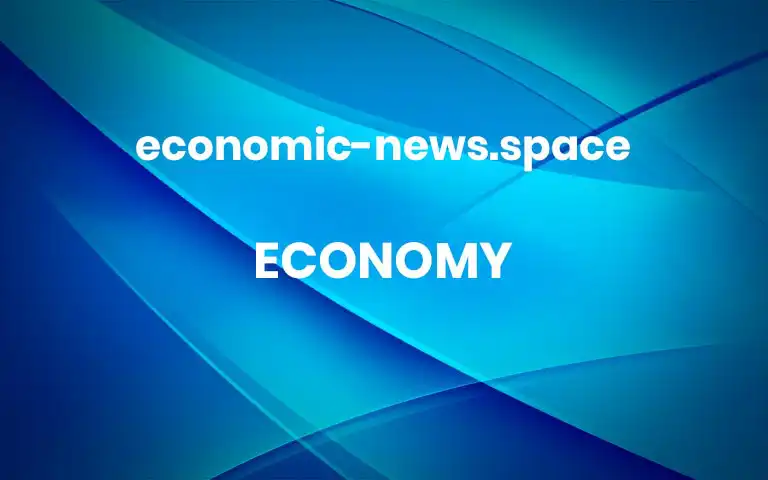Fed Closes Out Wild Year as All Eyes Focus on Bond-Buying Program

AdvertisementContinue reading the main storySupported byContinue reading the main storyFed Closes Out Wild Year as All Eyes Focus on Bond-Buying ProgramThe central bank’s meeting will wrap up Wednesday, as the Fed stares down a bifurcated economic outlook.Jerome H. Powell, the Federal Reserve chair, will likely need to walk a narrow line as he tries to explain how the Fed will proceed.Credit…Al Drago for The New York TimesDec. 16, 2020, 5:00 a.m. ETWASHINGTON — The Federal Reserve is wrapping up what might be the most activist year in its history with a final scheduled policy meeting this week, one at which it is expected to leave interest rates at rock bottom and to signal continued willingness to help the economy through the challenging pandemic era.Any policy changes out of this week’s gathering are expected to concentrate on the Fed’s large-scale bond-buying program, which it began in March. For a time, it pledged to buy as much government-backed debt as needed to help keep markets functioning before it settled into a steady pace of purchases. But the fate of that program is just one of several momentous questions that lie ahead.In the coming months, the policy-setting Federal Open Market Committee — a mix of governors in Washington and regional Fed presidents — will have to decide whether to ramp up or dial back bond purchases from the current pace of $120 billion per month, what specifically to buy, and how to communicate when they will stop.Fed governors, who oversee bank regulation, will have to consider in 2021 whether to extend tweaks put in place because of the pandemic. And Jerome H. Powell, the Fed chair, and his new, Democratic counterpart at the Treasury Department will have to decide whether to restart emergency loan programs that outgoing Treasury Secretary Steven Mnuchin is ending on his way out the door. Democrats have urged their renewal, and Republicans have warned against it.All of those decisions will be set against a fragmented economic backdrop: The recovery is sputtering in the near-term as the coronavirus spreads and keeps holiday travelers and shoppers at home, but the economy is expected to rebound sharply as a vaccine becomes widely available. The Fed’s monetary policies work with a lag, and the stark divide across time will make calibrating next steps all the more challenging.Mr. Powell will give his assessment of the economic outlook and answer reporter questions at a news conference following the 2 p.m. release of the Fed’s December policy statement. Officials will also release their quarterly economic estimates, which will offer a sense of what path they expect the unemployment rate, inflation and interest rates to follow over the coming years.Mr. Powell will likely need to walk a narrow line as he tries to explain how the Fed will proceed. Many investors are looking for more economic help in the near-term, and anything perceived as complacency could rattle them. Yet his colleagues, in recent speeches, have been divided over how much more the Fed needs to do now, which could make it difficult for the chair — who speaks, in part, as a representative for the Federal Open Market Committee — to present a conclusive message.The Fed has enacted a sweeping series of responses to cushion American workers and businesses against the pandemic’s economic fallout. It slashed interest rates to near-zero in March, rolled out its bond-buying campaign to soothe troubled markets, and unveiled a spate of programs to keep credit flowing to states and cities, small and medium-sized businesses and corporations.Those measures have largely achieved their goals. The central bank averted a financial system meltdown, borrowing costs have held at low levels across many credit markets, and interest rate-sensitive sectors like housing roared back after lockdowns. Yet the next stage could be harder: Millions of people remain out of work nine months into the crisis, many businesses are teetering on the brink, and while a vaccine is in sight, widespread immunity might still be months away.The Fed is also low on new tricks, but not entirely out of them. Officials could, as early as this week’s meeting, change the way they are buying bonds in order to have more of an economic impact.Policymakers are mulling whether to shift toward longer-term debt and away from short-term notes. That wonky maneuver may seem technical, but it could have the effect of holding down borrowing costs on things like mortgages and business loans and, in doing so, set the stage for stronger growth.“The economy is far more sensitive to longer-term rates,” said Priya Misra, global head of rates strategy at TD Securities. She pointed out that without Fed action, longer-term rates will rise as a deluge of Treasury securities enter the market to fund the government’s pandemic spending.But it is not a slam-dunk that such a change will happen at this meeting. Regional Fed presidents have expressed lukewarm appetite for changing the so-called quantitative easing, or Q.E., programs now.“If we need to offer more support or we need to prop up the support that we’ve offered, we can use Q.E. for that, including changing the duration,” Mary C. Daly, president of the Federal Reserve Bank of San Francisco, said in a recent question-and-answer session. “But if you look at financial markets right now, I see no indication that they are misunderstanding where we’re headed and that we need to somehow do something different to get financial markets where we need them to be.”Business & EconomyLatest UpdatesUpdated Dec. 16, 2020, 6:52 a.m. ETStocks are rising as pandemic relief talks and vaccine developments advance.Advocacy groups are rushing to get aid to renters before a federal cutoff date.Companies crucial to vaccine distribution are seeing a flurry of investments.Conditions are evolving quickly. Since the Fed entered its premeeting quiet period, during which officials do not give speeches, virus cases have continued to climb, several real-time data points have pointed to economic weakening, and rates on the closely-watched 10-year Treasury bond have crept higher, making many types of credit a bit more expensive. At the same time, vaccines have been approved and early disbursement has begun.Even if the Fed leaves the contours of its bond-purchase program unchanged for now, economists think the central bank might update the way it talks about its plans for the future. The central bank has indicated that it might offer guidance on how long it plans to buy assets to keep markets performing smoothly and bolster the economy “fairly soon.” That is likely to entail tying its bond-buying plans to qualitative — rather than numbers-based — economic goals.J.P. Morgan analysts think officials might link the buying to the course of the virus by saying that they will “continue purchases for as long as the public health crisis weighs on economic activity,” Michael Feroli, the bank’s chief U.S. economist, wrote in a research note.Economists at Goldman Sachs expect the Fed to pledge that purchases will continue “until the labor market is on track to reach maximum employment and inflation is on track to reach 2 percent.”That wide gap in expectations, even among top Fed-watching firms, underlines why this could be a fraught meeting for Mr. Powell. Disappointing investor expectations could roil markets, but it is not entirely clear what market participants expect.The Fed’s November meeting minutes also raised the possibility that the Fed might take a look at the types of bonds it is buying. The Fed is currently buying about $80 billion worth of Treasury debt and $40 billion in mortgage-backed securities — or M.B.S. — per month. But the minutes show that a few officials worried that “maintaining the current pace of agency M.B.S. purchases could contribute to potential valuation pressures in housing markets.”Whatever tweaks do come are likely to cut in the direction of more overall support for the economy. There are still about 10 million fewer jobs than in February, real-time indicators of consumer spending are coming in soft as virus cases surge, and jobless claims are rocketing higher once again, dimming the near-term outlook.“As economic momentum slows and Covid cases surge, we look for monetary policymakers to fortify the bridge that supports the economy until vaccinations become widely available,” Kathy Bostjancic, chief U.S. financial economist at Oxford Economics, wrote in a note previewing the meeting.The Fed will release a new set of quarterly economic projections at this meeting, and they are expected to reflect a more dire outlook in the near-term but also a stronger bounceback later on. But even with the vaccines coming, wild cards remain — including how much congressional support the economy will get in the near-term.Lawmakers are trying to hash out a compromise deal that would send households money and offer companies support, but Democrats and Republicans have remained divided over issues including liability protection and aid for state and local governments.The lack of a deal so far is one reason that Goldman Sachs economists expect the shift toward buying longer-dated debt at this meeting.“Although no one is under any illusions that a maturity extension is an adequate substitute for a fiscal package in offsetting the impact of the virus resurgence on businesses and workers, it might do some good,” they wrote in a research note. “At the very least, Fed officials might be weary of disappointing market expectations for an easing action in difficult times.”AdvertisementContinue reading the main story More



